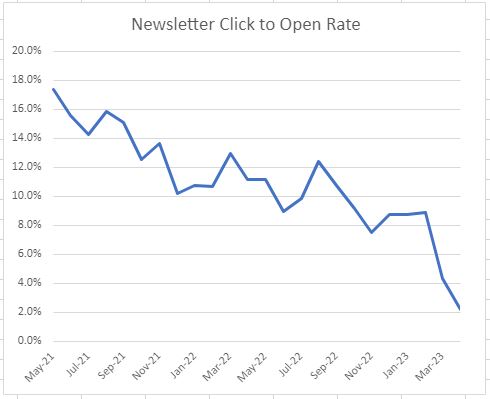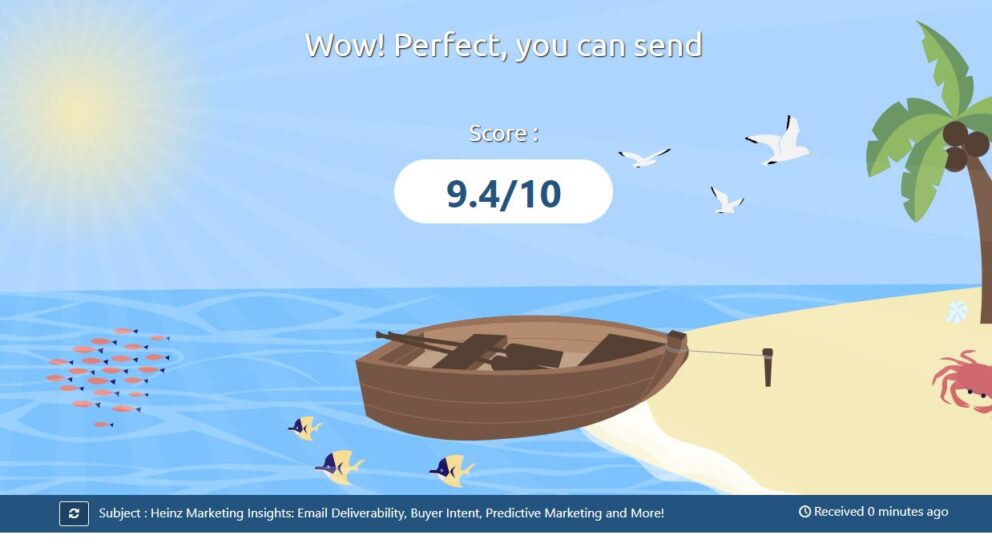Optimize your Email Deliverability: A Look at Heinz Marketing

Summary
Throughout 2023 I've been focused on email deliverability and optimization, driven by the poor email metrics we were experiencing. Despite previously having good deliverability rates, our open and click rates were steadily declining, and our emails consistently ended up in the Promotions tab or spam folder. Determined to understand the cause, I embarked on a journey of trial and error, researching and implementing various strategies—and finally uncovered the issue, finally leading to a higher CTR.
By Lisa Heay, Director of Business Operations at Heinz Marketing
I’ve spent the better part of 2023 so far writing about email deliverability and optimization. We’ve been on quite the journey together – investigating how who you send to, what you send, and how you send it all add up to determine how (or if) an email is received by your reader.
Where it All Began
What started me down this path in the first place was some really bad email metrics. Embarrassingly bad. We’re a marketing consulting firm – it’s not a good look if we can’t master this basic marketing channel.
But the weird thing was – our deliverability hasn’t always been bad. Historically, it had been quite good for a long time with above industry average open and click rates. But something changed along the way and our delivery, open, and click rates were inching down further and further each month.
And worse yet, our emails were landing in the Promotions tab every time. Sometimes even in the dreaded spam folder. We might as well have saved ourselves some time and not sent any emails at all—no one was seeing them.
Add on a tough market and tight marketing budgets – we needed to ensure that our email marketing channel was working for us. So I made it a goal of mine in Q1 of this year to figure out why we continued to see a decline in engagement.
Trial and Error
It was slow going at first. I researched everything email optimization, read blogs and articles, watched webinars, and spoke to experts over the course of months.
Our technology settings looked good— I checked Mail-Tester, MX Toolbox, and Email on Acid. I cleansed our database regularly, we segmented our lists in various ways, and we tried lots of variations of subject lines, CTAs, content formats, and even revamped our newsletter template. It felt like we had tried everything, but no matter what we did, our email metrics were not improving.
We came up with all sorts of reasons why – maybe our list was getting stale. Maybe our CTA’s aren’t interesting anymore. Maybe we need to try sending on a different day of the week. Oh, it’s the holidays – no one is in the office. We justified every excuse to explain away our bad numbers.
The Problem – Our Newsletter
As you can see from the graph above, our April newsletter was the straw that broke the camel’s back. We hit rock bottom that month with a CTR of 2.2%.
Ironically, we featured the start of my Email Deliverability blog series in that April newsletter email, but heard some comments from CMOs in our network that our newsletter email landed in their spam folder. Oof – that’s embarrassing.
I was feeling like a fraud. I’d started writing this blog series to share my learnings before we even figured out what was wrong with our own sends. I had learned so much from the research, but what good was it doing? I worried our readers had this vision of us in an ivory tower, preaching to the people how to do this, but we were very much in the trenches learning and trying to figure this out, too.
So it was all hands on deck to turn this ship around. We got to work prepping the May newsletter and started running more tests. Initially, it scored a 4.5 out of 10 in Mail-Tester. Yikes.
My teammate, Win, scoured our Mail-Tester results and found a line of javascript code in our new newsletter template that was flagged as an issue—dangerous code.
He removed it and tested again—7.4. An improvement from 4.5, for sure! But still not good enough to land us in the primary inbox.
I was about ready to throw in the towel on email marketing altogether, but after some more tweaking and testing, he discovered in Mail-Tester that DMARC failed for our reply.heinzmarketing.com domain that we had been using to send emails for years. This was a curious discovery because other tools, like MX toolbox and Google itself – had always said that our DMARC passed. I had more tools telling me it passed then failed, so it was an easy error to dismiss.
But it was the only trail we could follow at that point, and after further investigation, we discovered that our bulk email management software license had been terminated without notice, and we had been sending our emails from a non-existent email domain for who knows how long.
The Solution
We sprang to action and created a new sender and reply-to email address to use using our controlled @heinzmarketing.com domain instead. We quickly adjusted all of our nurture emails and newsletters to the new sender address and eagerly awaited the next send.
Sure enough – that next May newsletter email scored a 9.4 out of 10 in Mail-Tester and ended up in my PRIMARY email box in both Google and Outlook. Hooray!!! Not only that, but our click to open rate went from 2.2% in April to 14.1% in May! It was the highest Newsletter CTR we’ve seen since September of 2021.
It’s taken a few weeks but our email engagement across all of our campaigns are inching higher and higher. We know our emails are landing in our recipient’s inboxes now, but it’s likely they are seeing us there for the first time (or at least the first time in a long time).
We need to keep showing up, provide value-added content, and earn back the trust we lost over all that time. Our work is not done.
Key Learnings
It has been quite a journey this year. After everything I’ve learned and through our own troubleshooting experience, there are three main takeaways I’ll leave you with:
- Email optimization does not have to cost a lot of money. There are a lot of free tools out there that should be part of your testing process. Google Postmaster, MX Toolbox, and Mail-Tester have been crucial in diagnosing our issues.
- Keep digging. If you’re seeing low engagement, invest the time to figure out why. The issues did not arise for us right away. And some tools checked out while others flagged issues. Don’t ignore the ones flagging the issues. Do not leave any stone unturned.
- This is not a set and forget kind of thing. Each and every email you send is unique. Test them all and don’t ignore the errors. You might as well not send it at all if you’re not landing in your recipient’s primary inbox.
This stuff is not easy, and I’m no expert. But it feels great seeing our emails land right front and center in the inbox each week. Invest the time and effort to ensure you are not wasting time on your email marketing.



